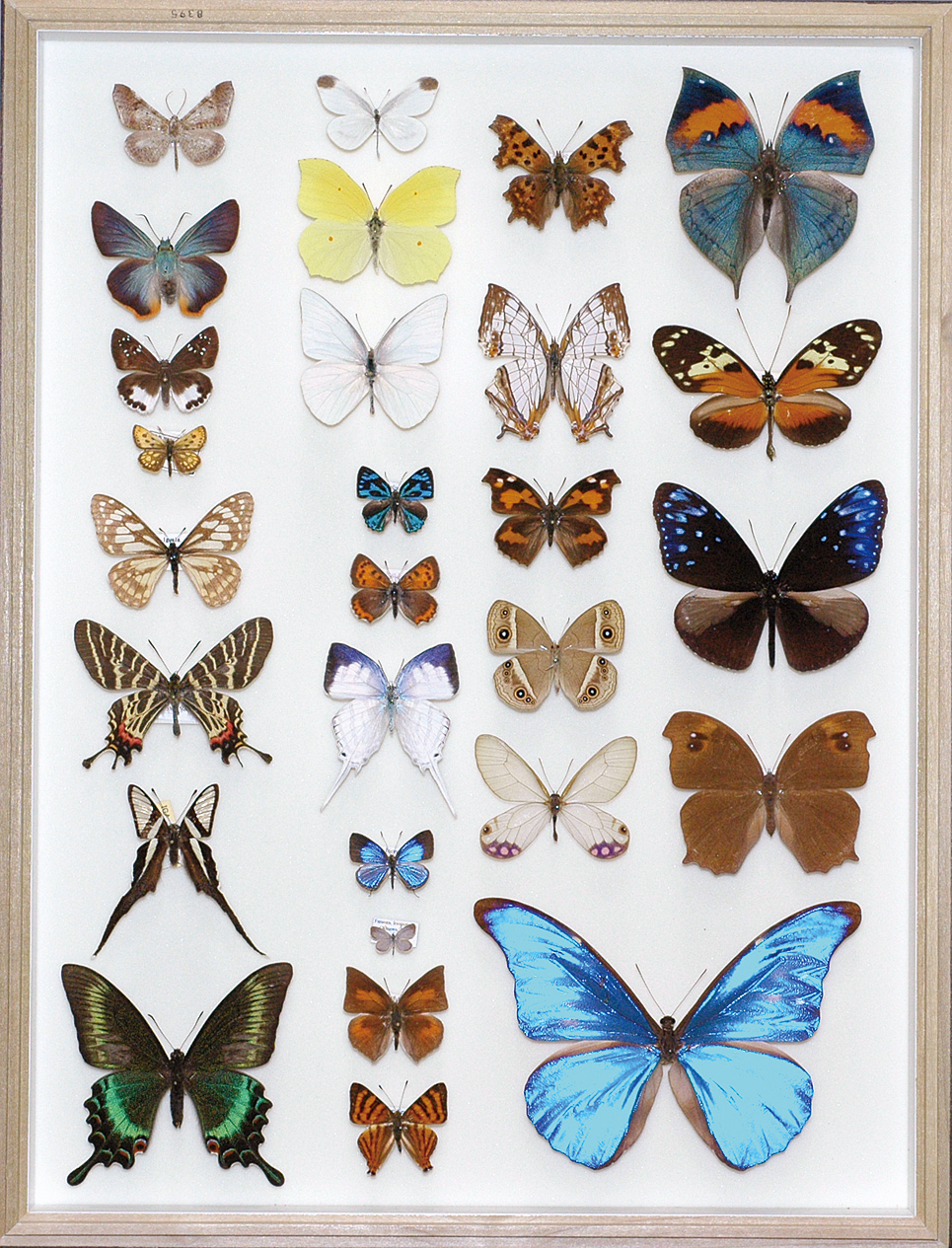B22
Superfamilies and families of butterflies
diversity of wing color and shape
Butterflies are a group of the insect order Lepidoptera, along with moths. The adults have large, variously shaped, often brightly-colored wings, and conspicuous, fluttering flight. In particular, this group has led to the evolution of wing colors and shapes due to antipredator adaptations such as warning color (mimicry) and cryptic color, flight ability, mate choice, reinforcement etc. Scales forming the wing coloration are pigmented with melanins that give them blacks and browns, as well as flavones, pterins and ommochromes that give them bright colors, but many of the blues, greens and iridescent colors are created by micro-structures (structural colors). Approximately 20,000 species of butterfly are divided amongst the large superfamily Papilionoidea and two smaller groups, the Hesperioidea (skippers) and the Hedyloidea (moth-butterflies). Hediloidea contains a single family, Hedylidae, the species of which are small, rather dull-colored and predominantly nocturnal. These hedylids have tympanic organs at the base of their wings to evade predation by bats. Hesperioidea comprises a single family, Hesperiidae, and has quick, darting flight habits. The wings are usually sharply-tipped in forewings and are fairly drab with a brown or grey tint. Papilionoidea generally consists of four families: Papilionidae, Pieridae, Lycaenidae and Nymphalidae. Of these, the latter family is the largest in number, the butterflies usually being medium in size. Color pattern phenomena include sexual dimorphism, geographical variation, warning color, polymeric mimicry and crypsis. (Masaya Yago)
References
Kawahara, A. Y. & Breinholt, J. W. (2014) Phylogenomics provides strong evidence for relationships of butterflies and moths. Proceedings of the Royal Society B, Biological Sciences 281: 20140970.
矢後勝也(2015)「第6章・チョウにみる進化と多様化」『遺伝子から解き明かす昆虫の不思議な世界』大場裕一・大澤省三・昆虫DNA研究会(編):251–310、悠書館。

